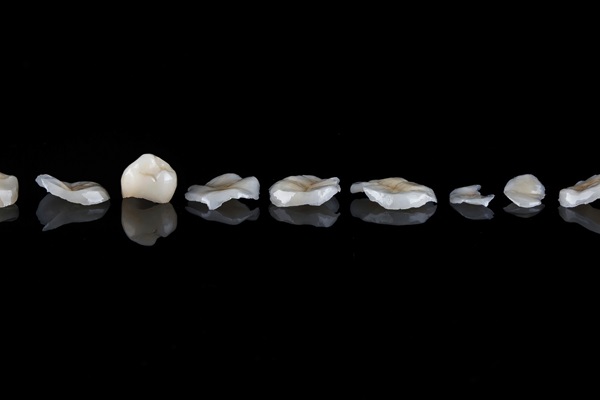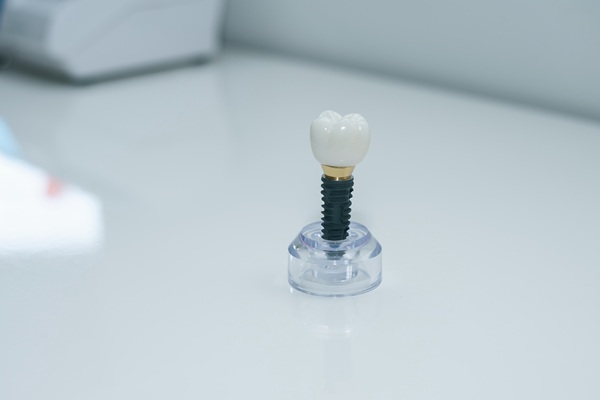Dental Inlay vs. Crown: When to Choose an Inlay, According to a Dentist

Asking a dentist when to choose a dental inlay vs. a dental crown ensures that patients receive the correct restoration information. Patients in need of dental guidance can make a consultation appointment with a local dentist.
Why dental restorations are necessary
Are you considering an inlay or crown for dental restoration? Restorative dentistry procedures are often necessary, as these procedures aim to improve a dental patient's overall oral health. Restoring the function and integrity of one's oral health is a primary focus for dentists. According to WebMD, examples of dental restorations include dental fillings, dental implants, dental bridges, dentures, dental crowns, and dental inlays.
Dental inlays
What are dental inlays? A dental inlay closely relates to a dental filling, except that dental inlays can treat more serious cases of tooth decay. When a large part of a tooth becomes jeopardized due to too much decay, a dental inlay is often used to restore the tooth to function once again properly. Unlike dental fillings, dental inlays are considered indirect dental restorations, as they are fabricated in a dental laboratory and then sent to a dentist so they can properly place them in the patient's mouth.
Dental crowns
What are dental crowns? A dental crown is a common restorative option that also helps restore a tooth that is in jeopardy of being lost due to too much decay. In addition, dental crowns are used to prevent a weak or damaged tooth from further harm, as this type of dental restoration completely wraps around a tooth, giving it the support it needs. Dental crowns are also considered indirect restorations, as they must be fabricated in a dental office or sent to a dental laboratory.
When choosing the inlay option is ideal
Dental inlays are an option to repair teeth when a tooth is damaged, yet the sides and chewing surfaces of the teeth remain undamaged. When patients fall under this category, a dental filling is probably inadequate to restore their tooth, and a dental crown is not quite necessary. Inlays are specifically made to extend into the cusps of a tooth, also known as the grooves, which add strength. As a result, inlays are often the ideal option for restoring a tooth's function while preventing any additional decay.
A few pros that come with getting dental inlays include the fact that they offer a better fit when compared to dental fillings, they do not stain, and they are easy to clean, long-lasting, and minimally invasive.
In need of dental restoration services?
Will a dental inlay be sufficient to repair one or more of your damaged teeth? While inlays are often used to repair minor tooth damage due to decay, patients experiencing moderate to severe damage may require a dental crown to be placed instead. In order for someone to understand the type of dental treatment they need to restore their good oral health, contacting a dental professional for their experienced advice is their next step.
If you are experiencing severe tooth decay, pain, and sensitivity, you may be in need of dental restoration. Call our office today and schedule an appointment to learn more about your options.
Request an appointment here: https://www.dentistlaplatamd.com or call The Wilhelm Dental Group at (240) 622-3547 for an appointment in our La Plata office.
Check out what others are saying about our services on Yelp: Dental Inlay in La Plata, MD.
Related Posts
A dental implant provides a stable base for a natural-looking tooth replacement. This proactive solution fills gaps in the smile and maintains a healthy jaw. Respectively, the bite remains aligned, preserving the natural shape of the face. Thanks to dental implants, patients can enjoy a stable and beautiful smile that lasts.The most noticeable impact of…
Seeing an emergency dentist for tooth extraction is sometimes necessary when pain, damage, or infection develops suddenly. Tooth extractions are typically planned in advance, but urgent situations may require immediate dental care to relieve symptoms and prevent further complications. Knowing when to seek help from an emergency dentist ensures that patients receive prompt and effective…
Denture stomatitis can affect patients who wear dentures, bringing uncomfortable symptoms like redness and inflammation. However, there are simple ways to prevent this condition. From consistent oral hygiene to denture relines, patients can wear dentures comfortably and without any issues.Denture stomatitis is a fairly common condition that causes inflammation in the soft tissues beneath a…
Root canal treatment often appears as a reliable option for saving a severely damaged or infected tooth, while extraction removes the tooth entirely. Both options offer advantages and disadvantages, but a few factors help the dentist determine which procedure to perform. Understanding the benefits and considerations of each choice can help you become an active…


